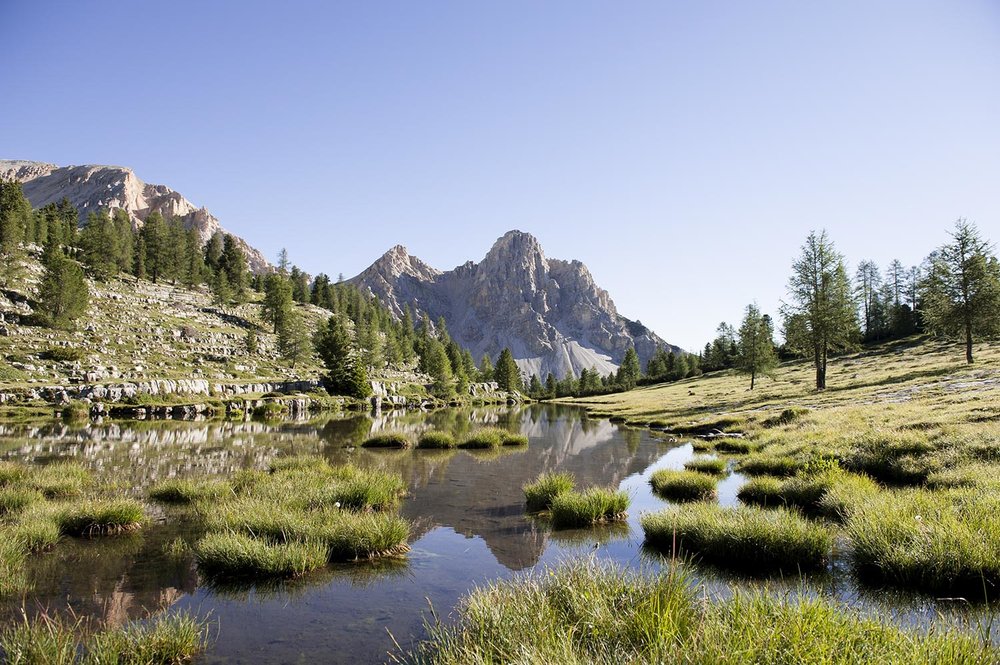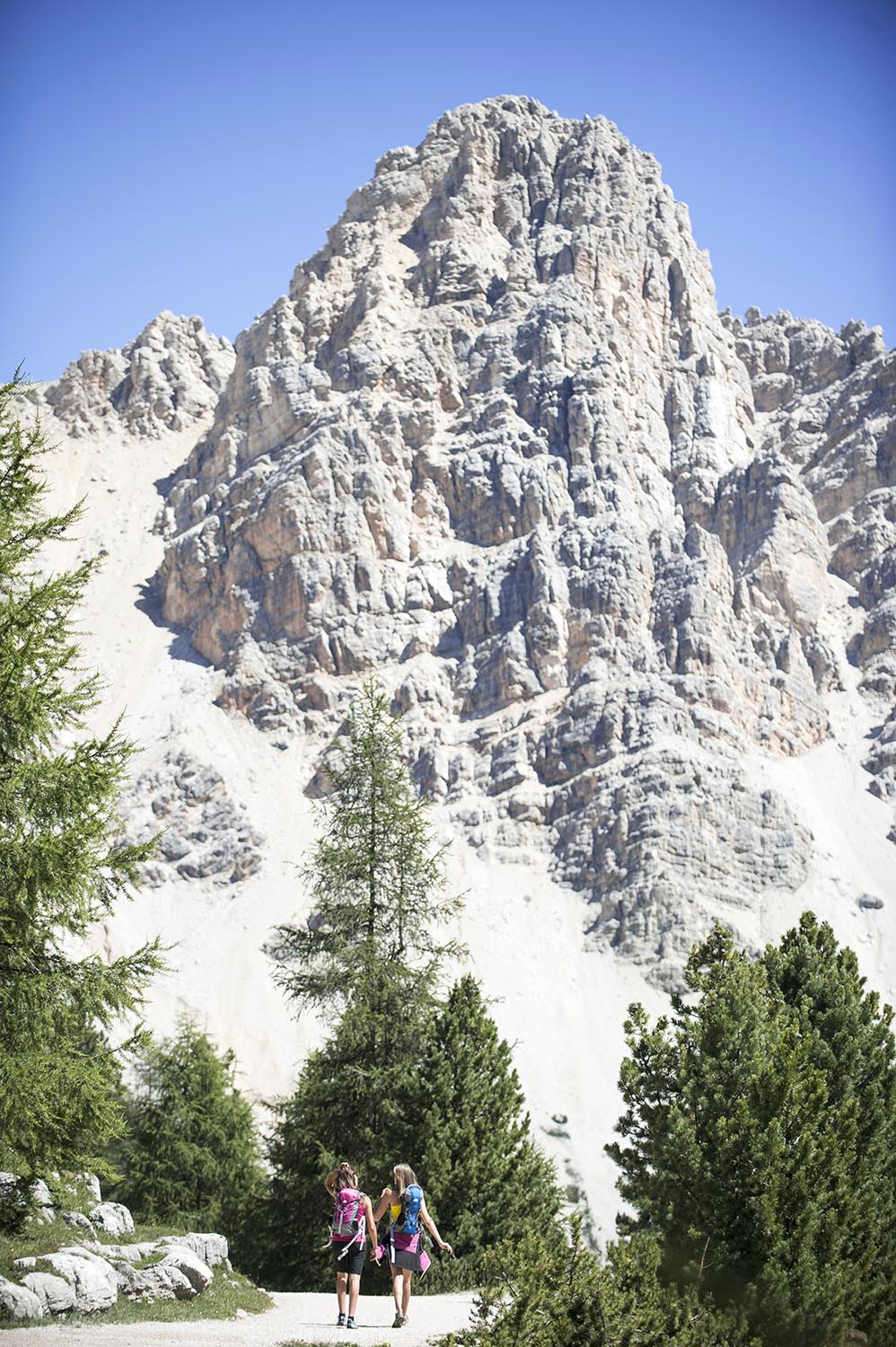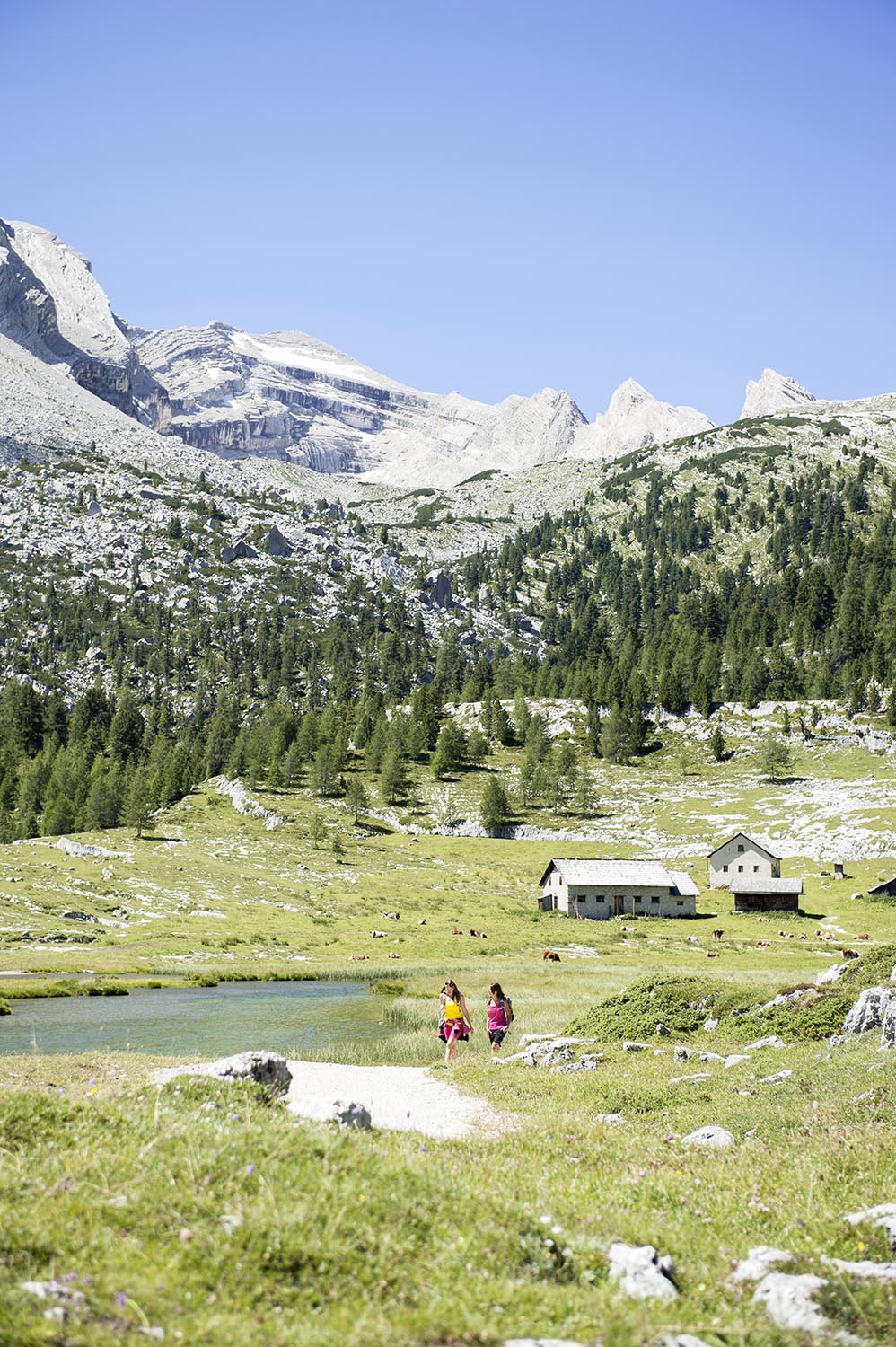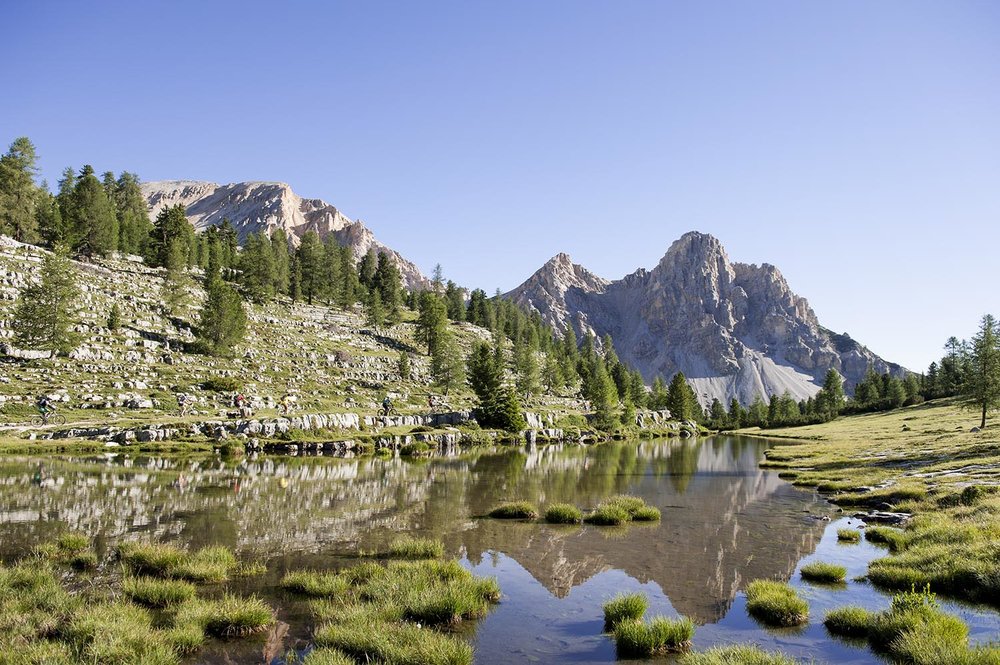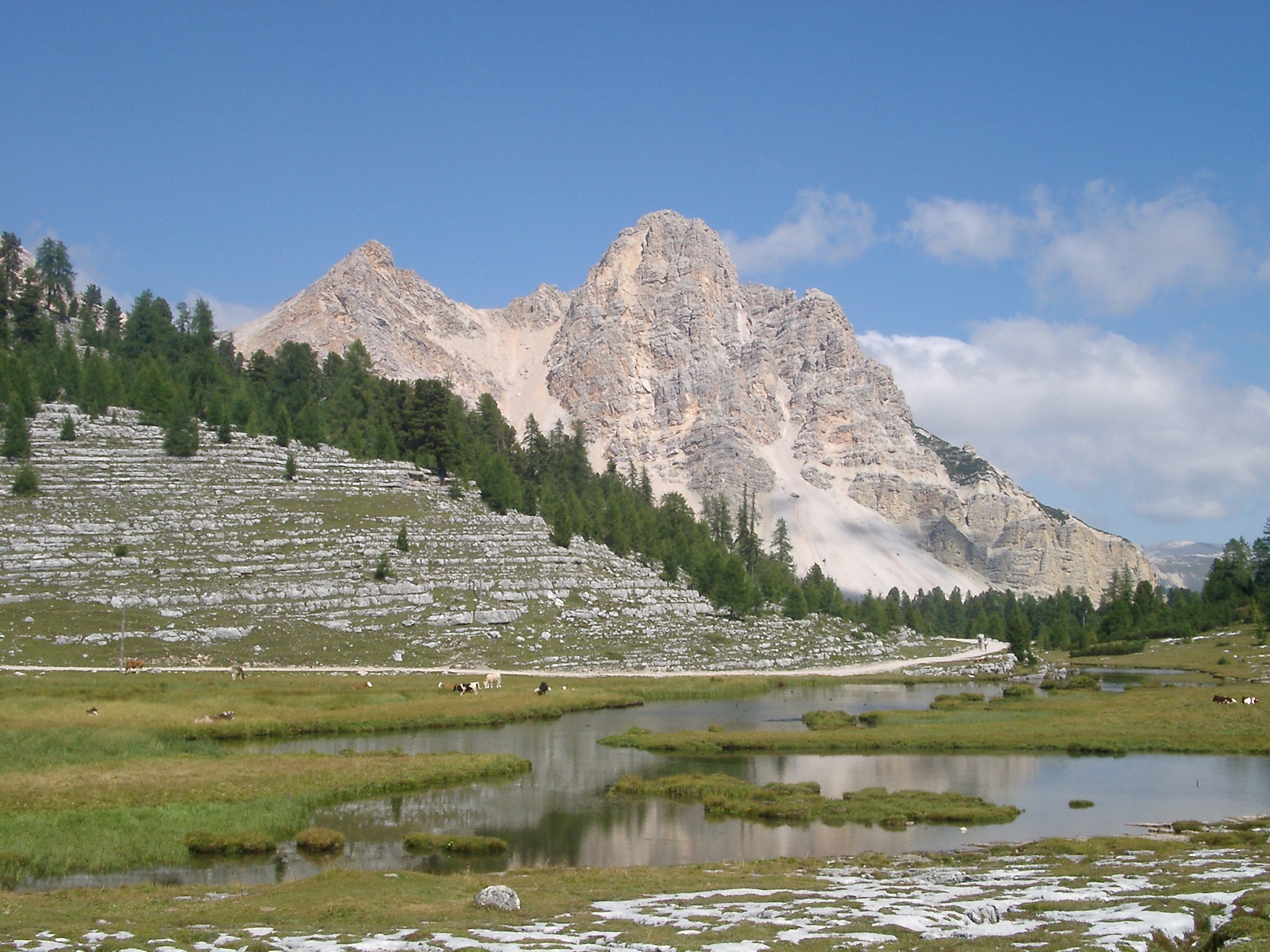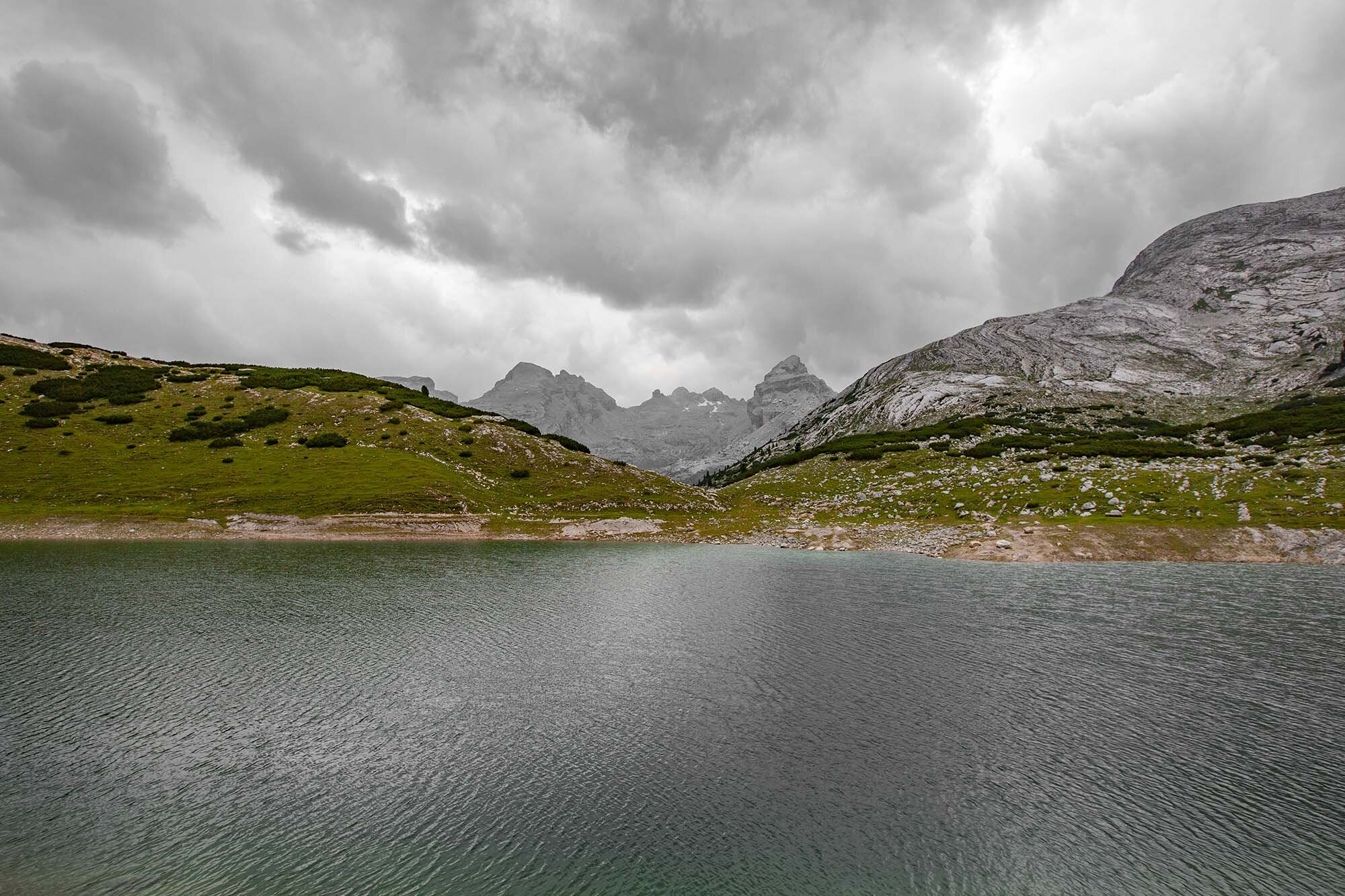Location FANES.
Following the route of the transhumance when it 'desmunta', i.e. descends into the valley, our route also takes us further down towards the altitude of 1800 metres and to the Fanes entrance: the Lavarella refuge, the Green Lake and the Limo Lake. This is also the entrance to a mythical area, that of the Fanes Kingdom, so rich in legends and the Ladin 'contíes'. So rich that we leave it up to you to delve into them through the links you will find here, as well as through a few keywords: the kingdom of marmots (in this very area there is a particular rock formation that is called the 'parliament of marmots'!), Dolasilla, Moltina, Spina de Mul, Ey de Net. In addition, Ladin myths tell of the 'ganes', the 'salvans', the 'malans', the 'pavarò', the 'Orco da La Val', the 'Bau', in short, the multifaceted population of the Ladin forests and folklore stories. Prof. Ulrike Kindl, a former associate professor at the Cà Foscari University of Venice and an expert on Alpine folklore and Ladin-speaking linguistic minorities, writes that the importance of legends is that they are "bearers of an extraordinarily effective symbolic thought, which narrates the Dolomite world of ancient times but which can only be understood through precise interpretations”.Finally, the toponym Fanes is also mysterious; some scholars say the word is of pre-Latin origin. The root could be in the Gothic language, or in the word fani-, which in the Romansh language of Switzerland still means 'quagmire, marsh'. In fact, water is abundant in Fanes, as the lakes in the area show.
-
https://parchi-naturali.provincia.bz.it/parco-naturale-fanes-senes-braies.asp
https://it.wikipedia.org/wiki/Regno_dei_Fanes
https://it.wikipedia.org/wiki/Fanes
https://en.wikipedia.org/wiki/Kingdom_of_Fanes
www.ladinia.it/it/informazioni/397/ladinia/il-regno-dei-fanes
www.visittrentino.info/it/articoli/unesco-dolomiti/dolomiti/leggende-i-monti-pallidi
https://wikisource.org/wiki/Proverbi,_tradizioni_e_anneddoti_delle_valli_ladine_orientali
-
Lavarella Hut:
https://goo.gl/maps/bET2BYUgsMkzRZz6AAccessible by car-van, preferably jeep-pickup or WD
-
Ed. 2021 - www.smach.it/arturs-punte-jekabs-vlatovskis
Ed. 2019 - www.smach.it/isabell-pitscheider
Ed. 2017 - www.smach.it/fabiano-de-martin-topranin
-
〉 Ladin
Da jí te Fanes, na munt che se desleria fora amesa crëps demorvëia, pón s’imaginé ciodiche les liëndes á ciafé vita avisa dailó. Tles formes di crëps straordinars pó le viandant corius odëi fora müses y figöres de porsones. Da sté chit dan le parlamënt dles muntagnoles, vëgnel alsavëi ci che chi tiers totemics cunta dl vedl Rëgn de Fanes, le rëgn ch’an aspeta dötaurela ch’al nasces indô.
〉 Italiano
Seguendo il percorso della transumanza quando “desmunta”, cioè scende a valle, anche il nostro percorso ci porta più in basso verso i 1800 metri dell’ingresso di Fanes: il rifugio Lavarella, il lago Verde e il lago di Limo. Questo è anche l'ingresso a una zona mitica, quella del Regno di Fanes, ricchissima di leggende, le contíes ladine che gli esperti dicono avere origini antichissime derivando da racconti orali di oltre duemila anni fa. Fanes è talmente ricca di storie che lasciamo a voi approfondirle sia attraverso i link che trovate qui oltre che attraverso alcune parole chiave che vi offriamo: il regno delle marmotte (proprio in questa zona c’è una formazione rocciosa particolare che viene chiamata il “parlamento delle marmotte”!), Dolasila, Moltina, Soreghina, Spina de Mul, Ey de Net. Inoltre, i miti ladini raccontano delle ganes, dei salvans, dei malan, delle pavarò, dell’ Orco da La Val, dei Bau, insomma di tutta la sfaccettata popolazione dei boschi e delle storie del folklore ladini. O ancora la leggenda per la quale le Dolomiti sono chiamate anche crëps stlauris, i monti pallidi. Infine, anche il toponimo Fanes è misterioso, alcuni studiosi dicono che la parola sarebbe di origine prelatina. La radice potrebbe essere la parola fani-, forse dal gotico, che nella lingua romancia della Svizzera significa ancora oggi “pantano, palude”. A Fanes l’acqua è infatti abbondante come dimostrano i laghi della zona.
〉 Deutsch
Die Fanes-Alm, erstreckt sich zwischen eindrucksvollen Gebirgsmassiven; hier kann man die vorhandenen ladinischen Mythen sehr wohl fühlen. Erstaunliche Felsformationen offenbaren dem neugierigen Reisenden überraschende Anthropomorphismen. Eine Rast beim Parlament der Murmeltiere ermöglicht es ihm, den Diskussionen dieser totemischen Tiere über das antike Reich der Fanes beizuwohnen, auf dessen Wiedergeburt man noch immer wartet.

